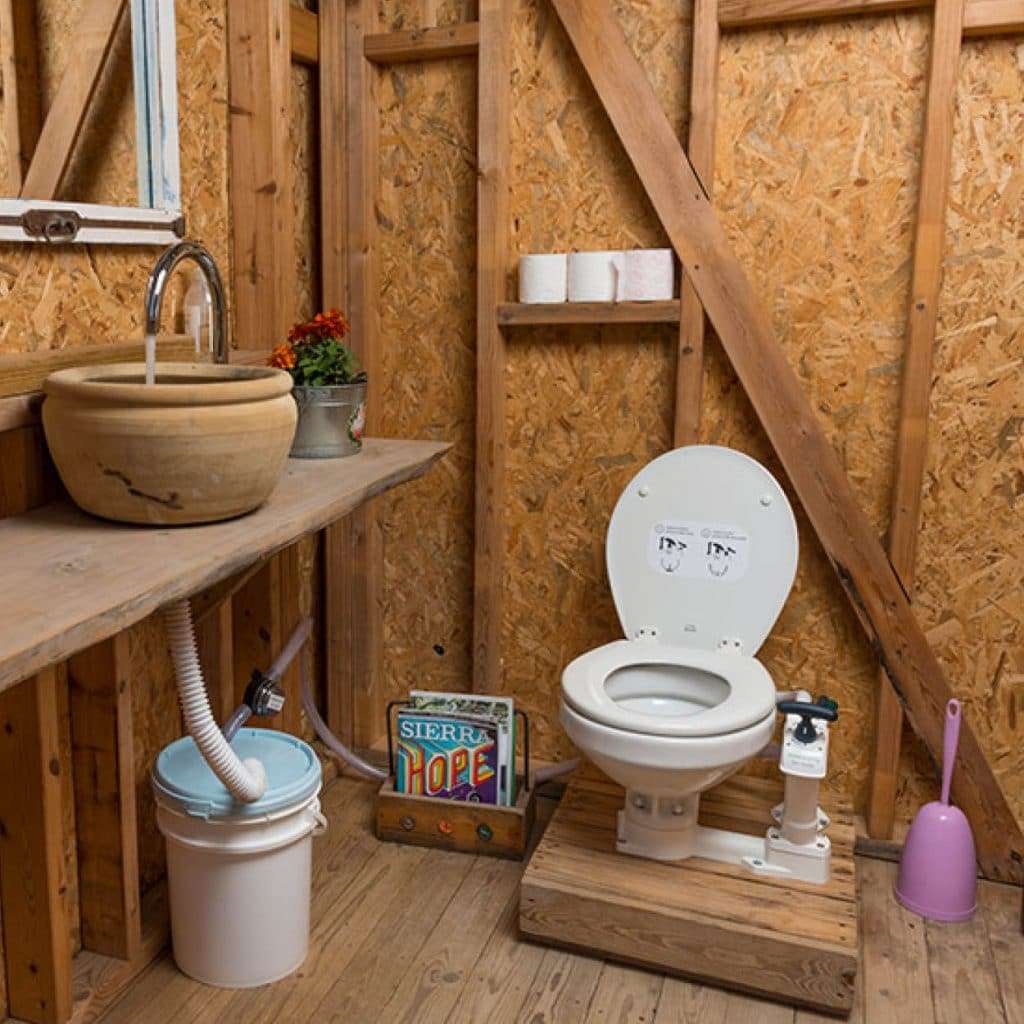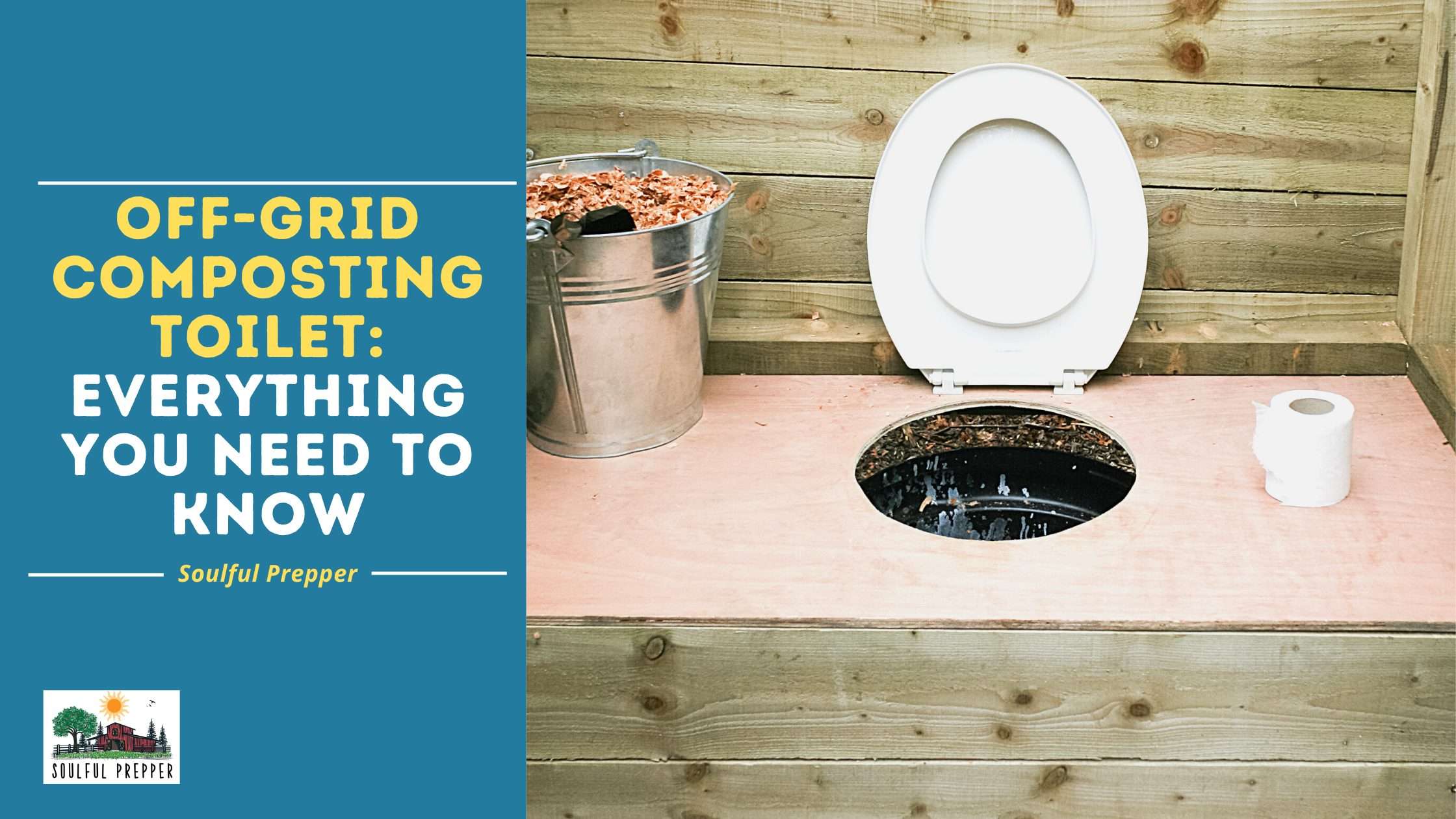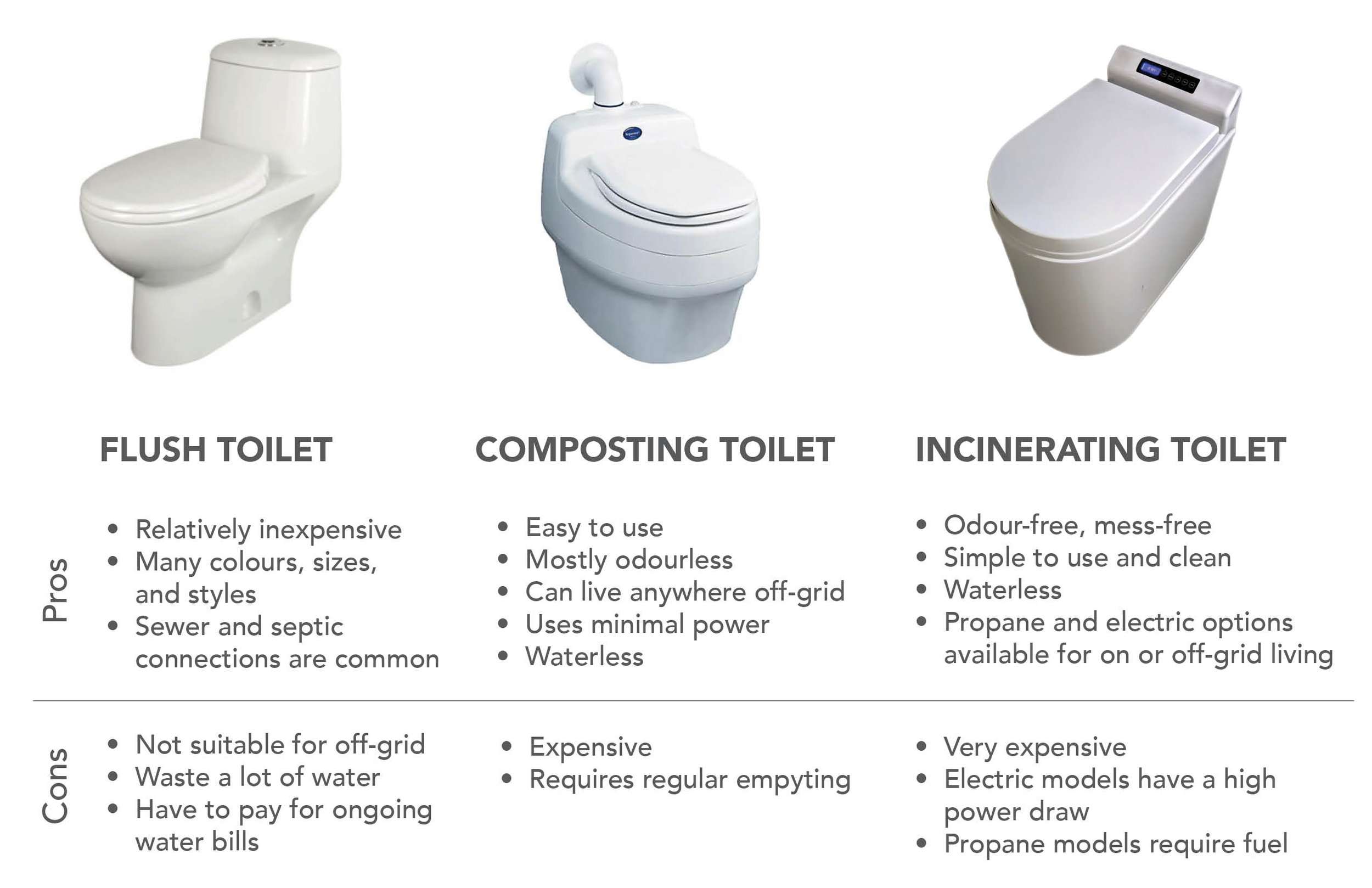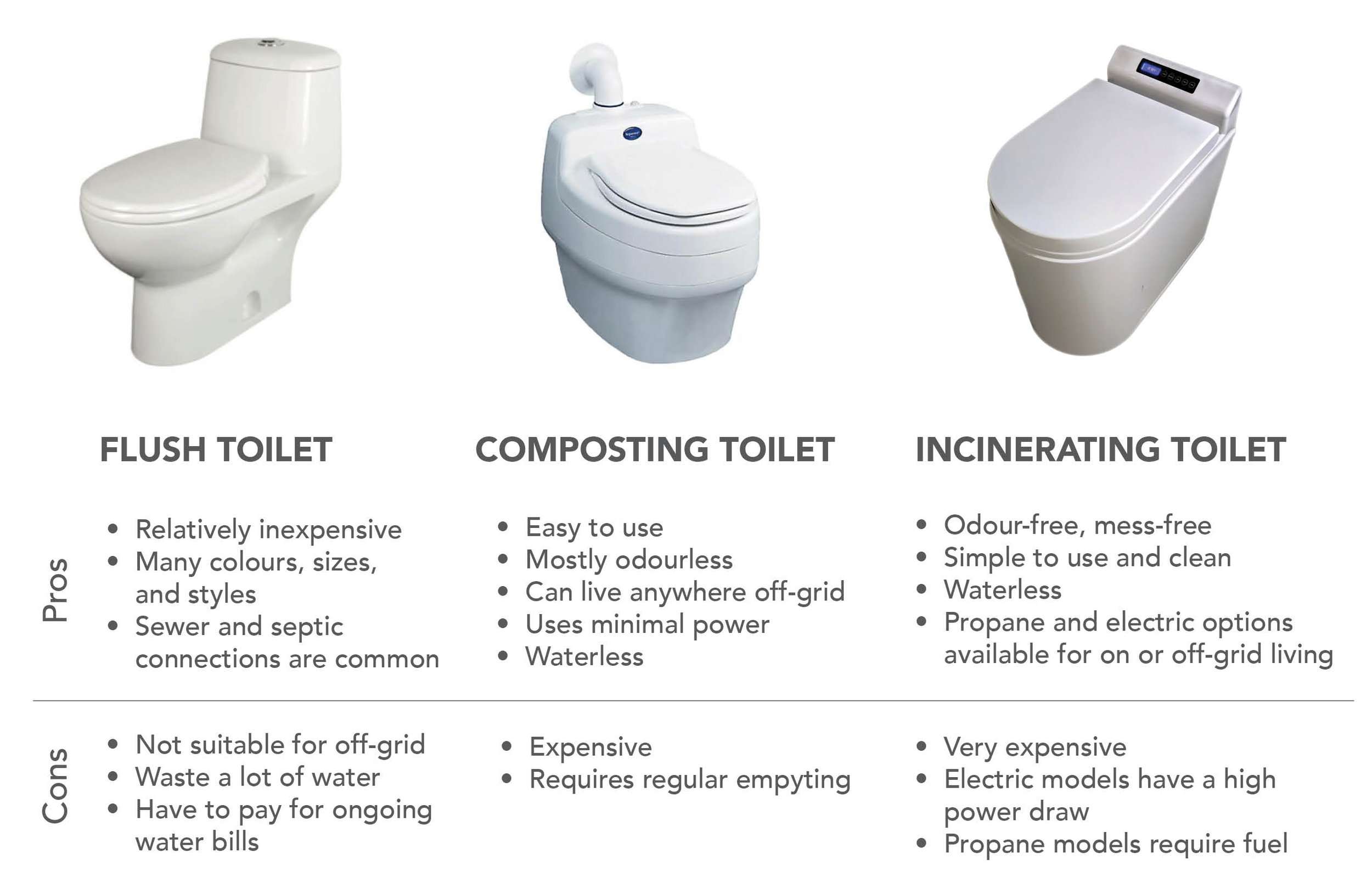Living off-grid presents its own unique challenges, and one essential aspect to consider is the disposal of waste, particularly in terms of toilets. Traditional sewer or septic systems are not viable options, therefore alternative solutions must be explored. One such solution is the self-sustained composting toilet, which offers a cost-effective option, albeit with regular maintenance requirements. Other options include centralized composting toilets, incinerator toilets, outhouses, septic systems, and honey buckets. Each option has its own pros and cons, such as low-maintenance but power-dependent incinerator toilets or cheap yet odor-producing outhouses. When selecting an off-grid toilet option, factors such as local laws, climate, family size, electricity requirements, and cost must be carefully considered.
Options for Off-Grid Toilets

Self-Sustained Composting Toilets
If you’re looking for an eco-friendly and cost-effective option for your off-grid toilet, self-sustained composting toilets are worth considering. These toilets utilize a natural decomposition process to break down waste into compost. The compost can then be used as a rich fertilizer for your garden or disposed of safely.
One of the biggest advantages of self-sustained composting toilets is their cost-effectiveness. They eliminate the need for expensive sewer or septic systems, saving you money in the long run. The initial investment may be higher than traditional toilets, but the savings over time make it a worthwhile choice.
However, self-sustained composting toilets do require regular maintenance. You’ll need to monitor the moisture levels, add carbon-rich materials like sawdust or peat moss, and occasionally turn the composting pile. This ensures that the process remains efficient and odor-free. But with proper care, you can enjoy a self-sustaining and environmentally friendly toilet system.
Centralized Composting Toilets
For those living in a community or shared off-grid environment, centralized composting toilets offer a practical solution. These toilets are connected to a shared composting system, where waste from multiple toilets is collected and processed together. This centralized approach simplifies the maintenance and management of composting toilets.
The main advantage of centralized composting toilets is the shared responsibility for maintenance. Instead of each individual having to monitor and maintain their own toilet, the task is divided among the community. This can save time and efforts for all residents, making it a convenient choice for off-grid communities.
It’s important to note that while the maintenance responsibilities are shared, routine maintenance is still required. Regular checks and monitoring of the composting system are necessary to ensure proper functioning and prevent any issues or odors from emerging. Therefore, open communication and cooperation within the community are key to successful centralized composting toilets.
Incinerator Toilets
If you’re looking for a low-maintenance option that doesn’t require any manual composting, incinerator toilets could be the perfect fit for your off-grid living. These toilets use high temperatures to burn waste, leaving behind a small amount of ash that can be easily disposed of. They are compact, odor-free, and require minimal effort to operate.
One of the major advantages of incinerator toilets is their low maintenance requirements. Unlike composting toilets that need regular monitoring and maintenance, incinerator toilets only require occasional emptying of the ash container. This makes them a hassle-free option, especially for those who prefer a hands-off approach when it comes to managing their toilet system.
However, it’s important to consider the power requirements of incinerator toilets. Most models rely on electricity to operate, so if you’re living off-grid without a reliable power source, this may not be the best option for you. It’s crucial to assess your power capabilities and availability before opting for an incinerator toilet.
Outhouses
When it comes to off-grid toilets, outhouses have been a popular choice for centuries. They are a simple and cost-effective solution, especially for those living in remote areas with limited resources. Outhouses are essentially small buildings or structures that house a hole or pit, where waste is deposited.
One of the main advantages of outhouses is their affordability. Building and maintaining an outhouse is relatively inexpensive compared to other off-grid toilet options. Additionally, they can be customized to suit your needs and preferences, offering a sense of privacy and comfort.
However, outhouses do come with their own set of considerations. Manual maintenance is required to empty the pit or hole once it fills up. This can be a physically demanding and unpleasant task. Furthermore, proper odor control measures, such as regular addition of lime or sawdust, must be implemented to keep the outhouse from becoming a source of unpleasant smells.

Septic Systems
When it comes to off-grid living, septic systems are one of the most commonly used toilet options. These systems work by collecting and treating wastewater on-site, providing a self-contained and environmentally friendly solution. If you have the space and resources, a septic system can be a reliable and convenient choice.
One of the advantages of septic systems is the ease of use and routine maintenance. Once installed, a septic system typically requires maintenance every 2-3 years, depending on the size and usage. This involves pumping out the accumulated solids and inspecting the system for any potential issues. Routine maintenance ensures that your septic system operates efficiently and prevents any major problems down the line.
It’s important to note that septic systems require proper planning and compliance with local laws and regulations. Before installing a septic system, you’ll need to consider factors such as soil conditions, water sources, and setback distances. Consulting with a professional and obtaining any necessary permits or approvals will help ensure that your septic system complies with local regulations and functions effectively.
Honey Buckets
If you’re on a tight budget or only need a temporary toilet solution, honey buckets might be the answer. Honey buckets are essentially portable containers, often made of plastic, that are used to collect and store human waste. They are a basic, affordable, and easily transportable option for off-grid toilets.
One of the main advantages of honey buckets is their affordability. They are the cheapest option for off-grid toilets, making them a suitable choice for those on a tight budget or for temporary or emergency toilet needs. Additionally, their portability allows for easy transportation and disposal of waste when necessary.
However, it’s important to note that honey buckets are not meant for long-term usage. They require frequent emptying and proper disposal of waste to prevent any sanitary or environmental issues. Therefore, if you’re looking for a more sustainable and long-term off-grid toilet solution, honey buckets may not be the most suitable option.

Factors to Consider
When choosing an off-grid toilet option, it’s essential to consider various factors that may impact your decision. Here are a few key factors to keep in mind:
1. Local Laws and Regulations: Before installing any off-grid toilet system, it’s crucial to familiarize yourself with local laws and regulations. Different jurisdictions may have specific guidelines for waste disposal and sanitation. Ensure that your chosen toilet option complies with these regulations to avoid any legal issues down the line.
2. Climate and Environmental Conditions: The climate and environmental conditions of your off-grid location can impact the performance and maintenance requirements of your toilet system. Extreme temperatures, heavy rainfall, or high humidity levels can affect composting or odor control, for example. Consider how these factors may influence your choice of toilet system and plan accordingly.
3. Family Size: The number of people using the toilet system on a daily basis will affect its capacity and maintenance requirements. Larger families may require a system that can handle higher volumes of waste and may need more frequent maintenance. Take into account the size of your household to ensure that your chosen toilet option can meet your needs effectively.
4. Electricity Requirements: Some off-grid toilet options, such as incinerator toilets, may require electricity to operate. Evaluate your power capabilities and availability before opting for a toilet system that relies on electricity. If a reliable power source is not readily available, consider alternative options that do not require electricity.
5. Cost and Budget: The cost of installation, maintenance, and operation should be a significant consideration when choosing an off-grid toilet. Assess your budget and determine how much you are willing to invest in a toilet system. Remember to factor in ongoing maintenance costs as well. A long-term, cost-effective solution may be more suitable for your budget and financial goals.
By considering these factors and understanding the benefits and maintenance requirements of each off-grid toilet option, you can make an informed decision that aligns with your needs and circumstances. Whether you prioritize cost-effectiveness, low maintenance, or environmental sustainability, there are various options available to ensure a comfortable and hygienic off-grid toilet experience.




